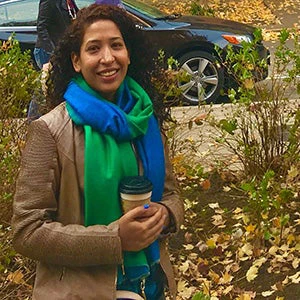
A little over six years ago, Neelam Kushwaha’s first daughter was born weighing 900 gm at birth, severely underweight. Neelam went into labor while working at the local construction site in Jori village, Rewa, Madhya Pradesh, India. Many people work at such local construction sites in rural areas for daily wages ranging from INR 150-280 (about $2- 4$) per day. Her daughter Manvi, was preterm, and Neelam spent months recovering from child birth complications.
Three years later, when Neelam was pregnant with her younger daughter, Sakshi, she quit wage labor and sought employment at an incense manufacturing unit established by World Bank’s Madhya Pradesh District Poverty Intervention Project (MPDPIP) in 2011. At her new role, she earned more and did not engage in labor intensive work during the final months of her pregnancy. Sakshi was born a healthy 3 kilos.
In the course of my field work supported by South Asia Food and Nutrition Security Initiative (SAFANSI) in 2015, I came across several similar stories.
MPDPIP’s livelihood based approach offered several opportunities towards income supplementation for women self-help groups (SHGs) and rural households through agriculture, dairy/poultry farming and local enterprises, among others.
As evident by Neelam’s experience, MPDPIP’s benefits went beyond income and spilled over into health improvement as well.
I learnt that prior to MPDPIP, childbirth in hospitals was difficult due to prohibitively high costs of travel and hospital stay. Pre-existing government schemes such as the Janani Suraksha Yojana (JSY) offer about INR 1,400 ($20) to rural women who opt for hospital deliveries. However, this payment occurs post-partum, and pre-delivery costs have to be borne upfront by pregnant women.
Post MPDPIP, women were able to opt for hospital deliveries with greater ease due to access to credit from their SHGs. This is particularly relevant for Madhya Pradesh as it has consistently fared poorly with respect to institutional deliveries.
The nature of livelihood enterprises under MPDPIP also seem to have influenced other aspects of women’s health. Alipura in Chattarpur district was one of the villages that received a local sanitary napkin manufacturing unit in 2014.
Within a year, it saw increased adoption of sanitary products, subsequent reduction in leucorrhea (foul smelling vaginal discharge that causes genital rashes, secondary bacterial infections, cervical erosion) and enhanced awareness on menstrual hygiene. Chronic Leucorrhea is considered a precursor to cervical cancer- the 2nd biggest killer of all cancers among Indian women, and reduction in Leucorrhea may prove instrumental in decreasing India’s cervical cancer disease burden.
These cases exemplify how livelihood initiatives can be leveraged towards overall improvement in public health. SHG based projects like MPDPIP have created a fertile ground for expansion beyond financial inclusion, into health.
With SHG women at the helm of this transformation, there is immense potential for such projects to influence gender equality, intra-household allocation of resources and health-centric decision making
- Impacting food security and nutrition outcomes through strengthening livelihoods : the experience from India livelihood projects
- NFHS 3, MP AHS bulletin- 2012.
- Dikshit, R., Gupta, P. C., Ramasundarahettige, C., Gajalakshmi, V., Aleksandrowicz, L., Badwe, R., ... & Mallath, M. (2012). Cancer mortality in India: a nationally representative survey. The Lancet, 379(9828), 1807-1816.
- Walraven G, Scherf C, West B, Ekpo G, Paine K, Coleman R, Bailey R, Morrison L (2001) The burden of reproductive-organ disease in rural women in The Gambia, West Africa. The Lancet 357(9263), 1161-1167, doi:10.1016/S0140-6736(00)04333-6
- Junej A, Sehgal A, Mitra A B, Pandey A (2003) A survey on risk factors associated with cervical cancer. Indian Journal of Cancer 40(1), (ISSN: 0019-509X)
- Gupta J, Gupta H (2001) Adolescents and Menstruation. The Journal of Family Welfare 47(1), 1-13


Join the Conversation